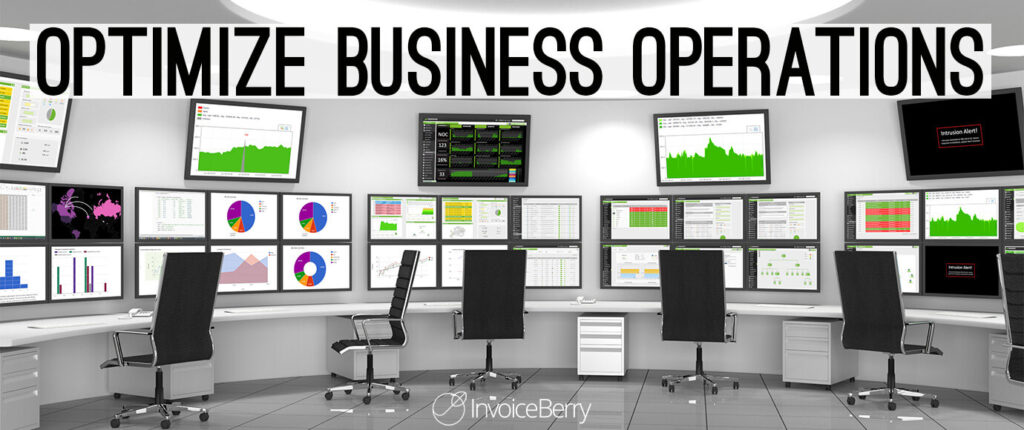In today’s fast-paced business environment, staying ahead of the competition requires more than just hard work and dedication. It demands access to accurate, up-to-the-minute information that can inform decisions and drive strategies.
Real-time information has become the backbone of modern business operations, enabling companies to respond swiftly to market changes, optimize processes, and deliver superior customer experiences.
In this article, we will explore how real-time information can transform your business efficiency, showcasing its benefits, applications, and the steps you can take to leverage its power.
The Power of Real-Time Information
1. Enhancing Decision-Making
Real-time information empowers businesses to make informed decisions quickly. Instead of relying on historical data, which may no longer be relevant, companies can access current data to understand the immediate state of their operations and the market. This ability to make data-driven decisions on the fly can significantly enhance business agility and responsiveness.
For example, a retail company can use real-time sales data to adjust inventory levels and promotions dynamically. If a particular product is selling faster than expected, the company can quickly replenish stock to meet demand, avoiding lost sales and unhappy customers. Conversely, if a product isn’t performing well, the company can take immediate action to minimize losses.
2. Optimizing Operations

Real-time information allows businesses to streamline their operations by providing visibility into various processes and workflows. This visibility helps identify bottlenecks, inefficiencies, and areas for improvement. By addressing these issues promptly with distribution management software, companies can enhance productivity and reduce operational costs.
Manufacturing firms, for instance, can benefit from real-time monitoring of production lines. Sensors and IoT devices can provide continuous data on machine performance, production rates, and quality control. Any deviation from the norm can trigger immediate corrective actions, preventing costly downtime and ensuring consistent product quality.
3. Improving Customer Experience
In today’s customer-centric market, delivering a superior customer experience is crucial for success. Real-time information plays a pivotal role in understanding and meeting customer expectations. By analyzing this data from various touchpoints, businesses can gain insights into customer preferences, behaviors, and feedback.
Consider the case of an e-commerce platform that uses real-time data to personalize the shopping experience for each visitor. By tracking user behavior and preferences in real time, the platform can recommend products, offer personalized discounts, and streamline the checkout process. This level of personalization not only enhances customer satisfaction but also increases sales and customer loyalty.
Applications of Real-Time Information

Supply Chain Management
Supply chain management is one area where real-time information can make a substantial impact. By integrating this data from suppliers, logistics providers, and internal systems, businesses can achieve end-to-end visibility across the supply chain. This visibility allows for better coordination, reduced lead times, and improved inventory management.
For example, a company can use real-time tracking to monitor the movement of goods from suppliers to warehouses and ultimately to customers. If a delay occurs at any point in the supply chain, the company can quickly identify the issue and take corrective actions, such as rerouting shipments or adjusting production schedules.
Financial Management
Real-time information is also transforming financial management by providing businesses with accurate and timely insights into their financial health. By integrating real-time financial data from various sources, companies can monitor cash flow, track expenses, and manage budgets more effectively.
A financial services firm, for instance, can use real-time analytics to detect fraudulent transactions as they occur. By leveraging machine learning algorithms and data feeds, the firm can identify suspicious activities and take immediate action to prevent losses. This proactive approach not only protects the company’s assets but also builds trust with customers.
Marketing and Sales

Marketing and sales teams can leverage real-time information to enhance their campaigns and boost conversion rates. By analyzing this data from social media, websites, and customer interactions, businesses can gain insights into market trends, customer sentiments, and campaign performance.
For example, a marketing team can use real-time data to track the effectiveness of a new advertising campaign. By monitoring metrics such as click-through rates, engagement levels, and conversion rates in real time, the team can quickly identify what works and what doesn’t. This allows for rapid adjustments to the campaign, maximizing its impact and return on investment.
Implementing Real-Time Information Systems
1. Data Integration
To harness the power of real-time information, businesses need to integrate data from various sources into a unified system. This integration can be achieved through the use of data integration platforms, APIs, and middleware solutions. The goal is to create a seamless flow of data across the organization, ensuring that decision-makers have access to accurate and timely information.
2. Analytics and Visualization

Once the data is integrated, businesses need robust analytics and visualization tools to make sense of the information. Advanced analytics platforms can process large volumes of real-time data, applying machine learning algorithms and predictive models to uncover valuable insights. Visualization tools, such as dashboards and reports, present these insights in a clear and actionable format.
3. Infrastructure and Security
Implementing these systems requires a robust IT infrastructure capable of handling high data volumes and ensuring low-latency processing. Cloud-based solutions can offer scalability and flexibility, allowing businesses to expand their real-time capabilities as needed. Additionally, robust security measures must be in place to protect sensitive data and ensure compliance with regulations.
Challenges and Considerations
Data Quality
The effectiveness of real-time information systems hinges on the quality of the data being used. Inaccurate or incomplete data can lead to erroneous insights and poor decision-making. Businesses must implement data quality management practices to ensure that the data is accurate, consistent, and reliable.
Integration Complexity

Integrating data from diverse sources can be a complex and time-consuming process. Businesses need to carefully plan and execute their integration strategy, considering factors such as data formats, protocols, and compatibility. Leveraging experienced data integration specialists and proven tools can help streamline this process.
Real-Time Analytics
Real-time analytics requires significant computational power and advanced algorithms to process data rapidly and accurately. Businesses must invest in the right technologies and expertise to build and maintain their analytics capabilities. This may involve adopting cloud-based solutions, hiring data scientists, and continuously updating analytics models.
All in all…
Real-time information has the potential to revolutionize business operations, driving efficiency, agility, and customer satisfaction. By embracing this data, businesses can make informed decisions, optimize processes, and deliver exceptional experiences to their customers. The journey to real-time information integration requires careful planning, investment in technology, and a commitment to data quality. However, the rewards are well worth the effort, as businesses that successfully harness information will be better positioned to thrive in today’s competitive landscape.

